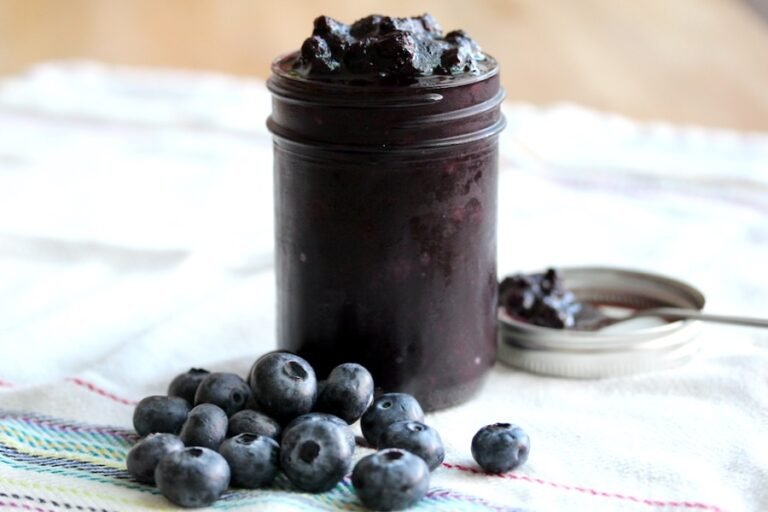Blueberry season is very important to our family. Specifically, wild blueberries. The adventure usually begins at the beginning of August, when wild blueberries first start to appear in shops and markets. My husband Josh starts with the basic price for an 11 liter wooden basket. Prices start off higher when the berries first come out and over the course of the month, they gradually drop. It’s a tough game. You want to get the best price, but if you wait too long, you’re completely missing out and out of luck until next year – which means you’ll have fewer berries to make that homemade blueberry jam with.
Josh takes his wild blackberry game very seriously. In 2017, he went so far as to drive to the food terminal with our one-month-old son to buy his annual bulk purchase (while I slept for an hour).
We love our wild blueberries.
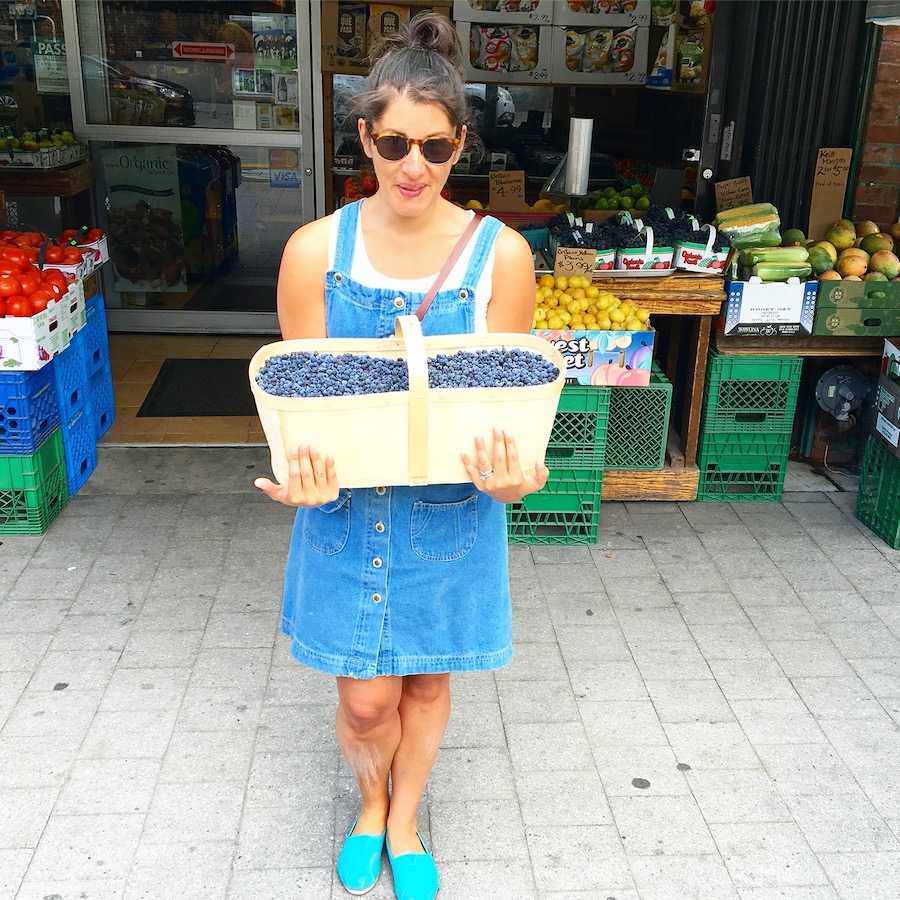
Now to be clear, I love all things blueberries. They are nuclear antioxidants, protecting us from free radical damage, either from the sun or from the stress we create in our minds. There is, however, some extra strength in the wild variety.
Wild foods, such as wild blueberries, must be able to sustain themselves in the wild without the help of farmers or man-made fertilizers. Compared to their cultivated counterpart, wild blueberries have a higher concentration of the antioxidant anthocyanin and therefore have a higher antioxidant capacity per serving than the cultivated variety. These antioxidants, as part of the diet, they have anti-inflammatory and anti-cancer propertiesand are also noted for their benefit in prevention cardiovascular disease. My favorite benefit of antioxidants is their natural sunscreen abilities – eating wild blueberries in the summer it can protect from the sun’s harmful rays.
Don’t be fooled by the labels on frozen berries in stores. You will be hard-pressed to find true wild blueberries for sale in bulk. Recently, a Canadian grocery store mislabeled frozen blueberries from wild to “cultivated highbush.”
True wild blueberries are the berries you’ll find at your local market for a short time each summer, often selling for eight dollars to $12 a quart. They grow in nature, usually on rocky outcrops, are labor-intensive and time-consuming to harvest. They’re also worth every penny when you consider the nutrients and flavor of each little gem of goodness.
Again, I’ll take blueberries in any chemical-free form. This summer I even started my blueberry growing adventure. As I write this, my family of three has indulged in a bountiful harvest of eight berries.
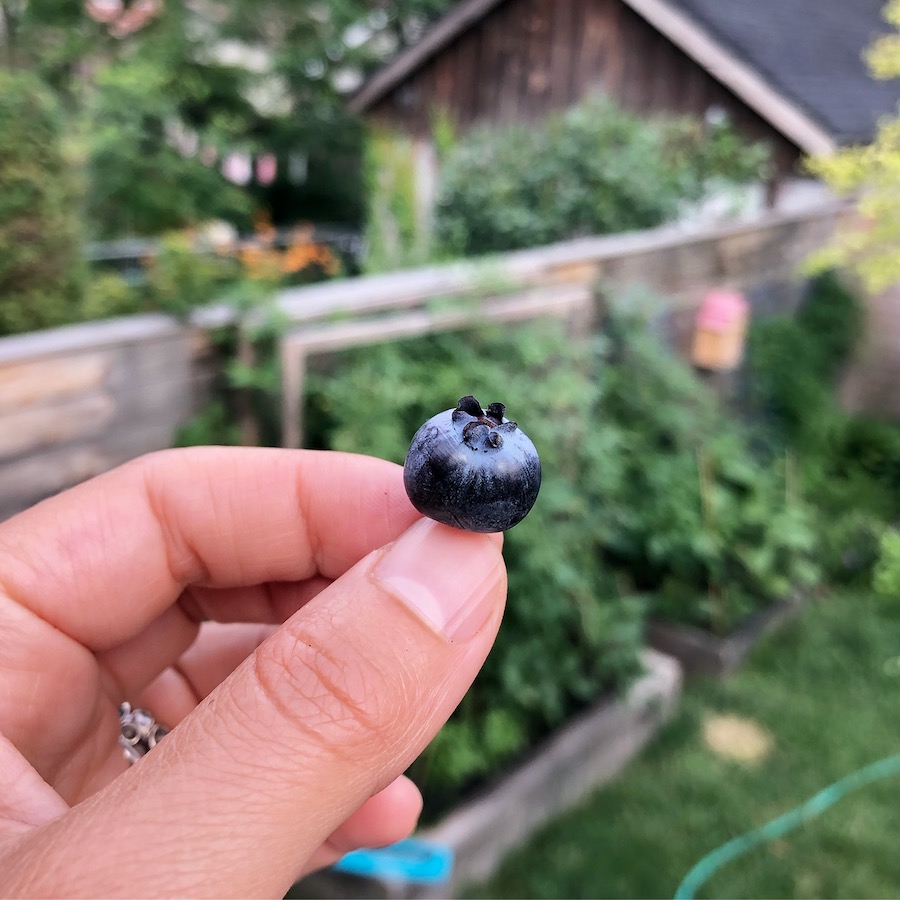

Favorite ways to enjoy blueberries
The best way to eat blueberries is, of course, by the handful. Second, I’ll have them in a smoothie, a muffin, topped with homemade ice cream, a raw cheesecake, or a crumble, and these dehydrated blueberry “pancakes” are a winner all around.
And for today’s sake, and for the sake of the two boys I share my house with, I’ll add jam to the list of favorites. There’s a small part of me that doesn’t like taking something so fresh and nutritious and cooking it up, like you do with a jam. But there’s a bigger part of me that just can’t buy jam full of sugar, a sweetener with sugar and fruit concentrate at the store. So, even though I’m still on hiatus from added sweetener in my life, I made this jam for the boys to enjoy.
I love this recipe because it’s so easy to make, no fancy ingredients and you can control the consistency.
Click here to access the Jam and Thumbprint Cookie Recipes
Free resource library
Enjoy over 40 downloadable guides, recipes and resources.
Let’s make jam!
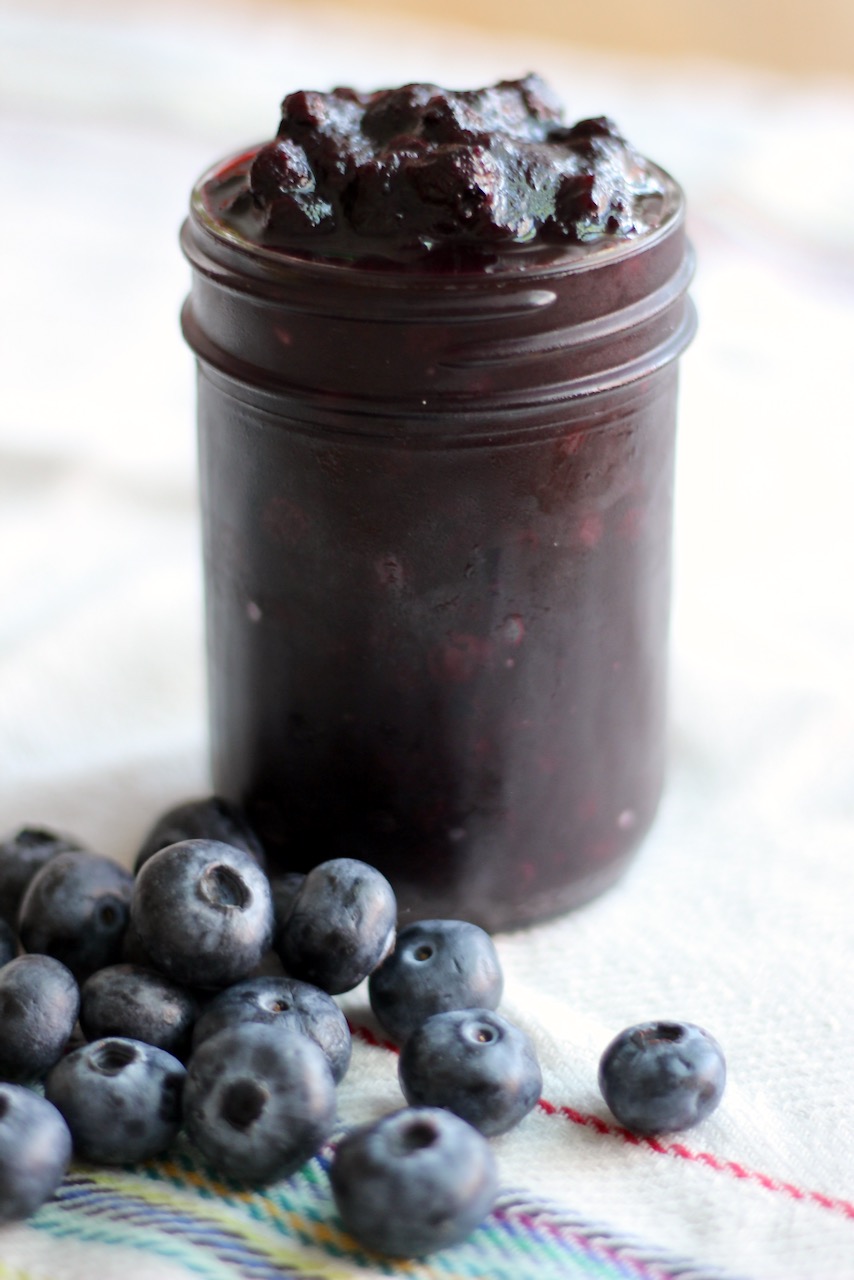

Pectin
Pectin is part of what gives jam that sticky jelly/jam texture. It is what holds the jam together. Pectin packets bought in commercial stores are actually dextrose, a sugar derived from corn, one of the most genetically modified crops on the planet. So, I prefer to use an original whole source in my jam – apples. Cranberries also happen to be pretty high in pectin, so that makes it a super jam-friendly berry.
Shelf stability
My blueberry jam recipe below is not shelf stable. It is what I would call freezer jam. You can make loads, but your best bet is to store it in the freezer. To make a jam really shelf stable, you need a lot more sugar than I want to use to ensure a certain pH level to prevent fur and whatnot. I’m happy to make it in small batches and freeze the jars, or just freeze the berries whole and thaw some when it’s time to make a new batch of jam.
Description
A simple homemade blueberry jam, naturally sweetened and without fillers.
- 4–5 cups wild blackberries or regular blackberries
- 1 mug applesauce (organic + sugar free or make your own)
- 2 tbsp lemon juice
- ½ cup (or more to taste) sucanata or coconut sugar
- In a saucepan, combine the berries, applesauce, lemon juice and sugar of your choice.
- Let it boil while stirring (uncovered).
- Bring to a simmer, uncovered, and continue to stir occasionally.
- Let it cook to about 1/3–1/4 of its original volume (about 45 minutes). It will thicken as it cools.
- Once the desired consistency is reached, taste and add more sweetener if needed.
- Transfer to a glass jar and refrigerate once cooled.
- It is kept in the refrigerator closed for two weeks, once opened, it is consumed within 8-10 days. Keeps in the freezer for months!
- Preparation time: 5 minutes
- Cooking time: 1 hour
- Category: Spice
Free resource library
Enjoy over 40 downloadable guides, recipes and resources.
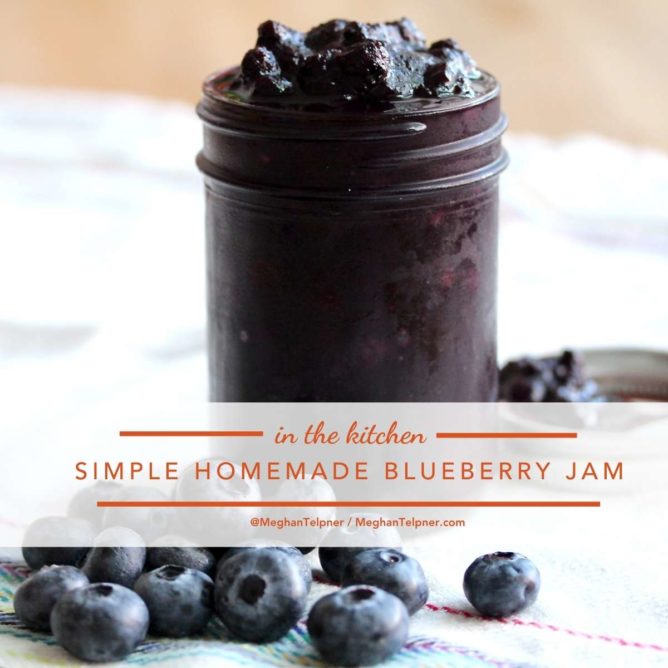

Free resource library
Enjoy over 40 downloadable guides, recipes and resources.


